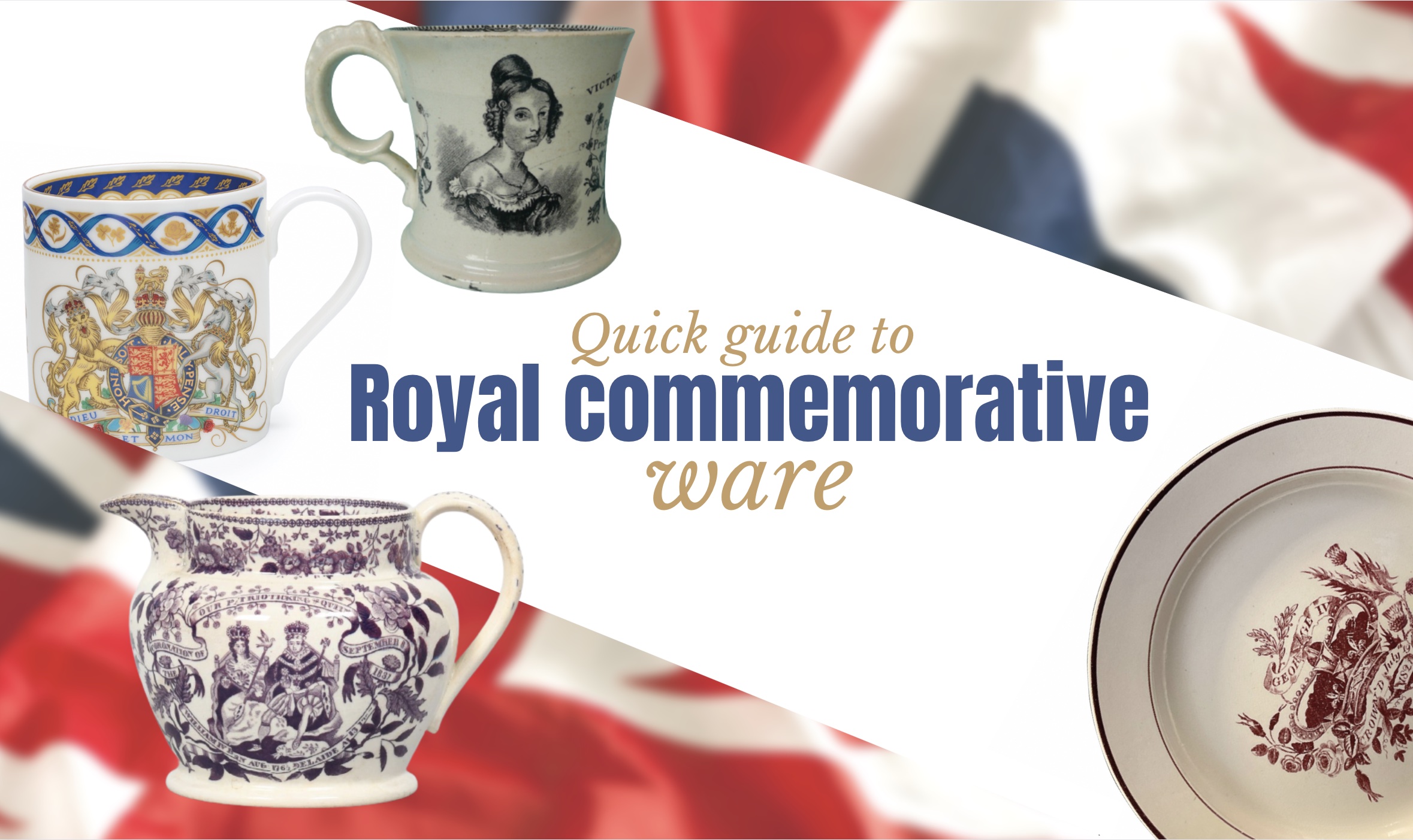#Collecting #Royal #Commemorative #ware #quick #guide #Antique #Collecting
 With the country just recently celebrating the coronation of Kind Charles III, antiques valuer Edward Rycroft looks back on the most collectable royal commemorative ware from previous monarchs
With the country just recently celebrating the coronation of Kind Charles III, antiques valuer Edward Rycroft looks back on the most collectable royal commemorative ware from previous monarchs
It remains to be seen which pieces of commemorative ware for this month’s coronation will stand the test of time and become the sought-after antiques of the future. It is generally considered it was Charles II whose coronation was first celebrated on a piece of china.

Much of the rarest pieces of commemorative ceramics and glassware have found their way into royal collections and museums, out of the reach of the ordinary buyer. But for the collector there are still plenty on offer. The advent of transfer printing on pottery, rather than hand painting, was a watershed in the mass production of commemorative ware.
But it was the Industrial Revolution that really fuelled the country’s ravenous desire for royal souvenirs. As a collecting sphere royal commemorative ware is unbeatable. Long may it reign.
Royal Commemorative ware of George III
George III came to the throne in 1760 at the start of the Industrial Revolution which heralded a huge progression in living standards and national wealth. It saw the start of a middle class at which so much latter royal commemorative ware would be aimed. Ceramics from the date of his coronation are scarce and highly sought after.
In 1789, the king’s health declined and hasty arrangements were made for the transfer of sovereign power. In the event he recovered and the arrangements were not implemented.
A number of ceramics were produced to celebrate George III’s return to health. The pearlware jug (below left) dates from around 1793 and is hand painted with the then royal cypher ‘GR’ and the crown, with swag decoration. It fetched £220 in 2017, meaning it is not out of the reach of the ordinary buyer.
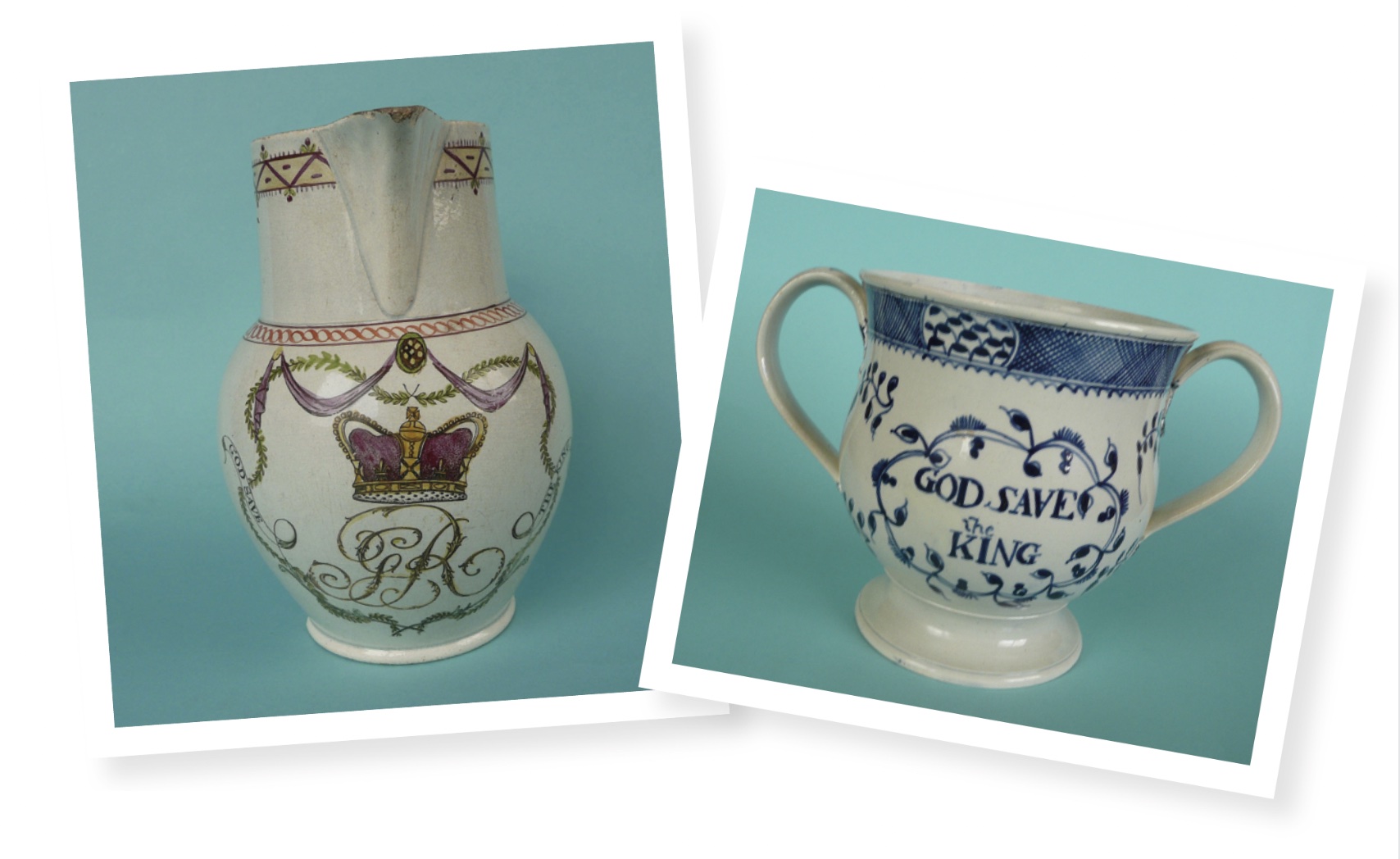
George IV
Having served as the Prince Regent since 1811, George IV ascended the throne in 1820 and was crowned in 1821. This plate is a good example of a creamware which was a typical of the ceramics of the period. It sold in January this year for £140. A decent amount for a royal commemorative piece but not exactly breaking the bank and would make a great addition to any collection.
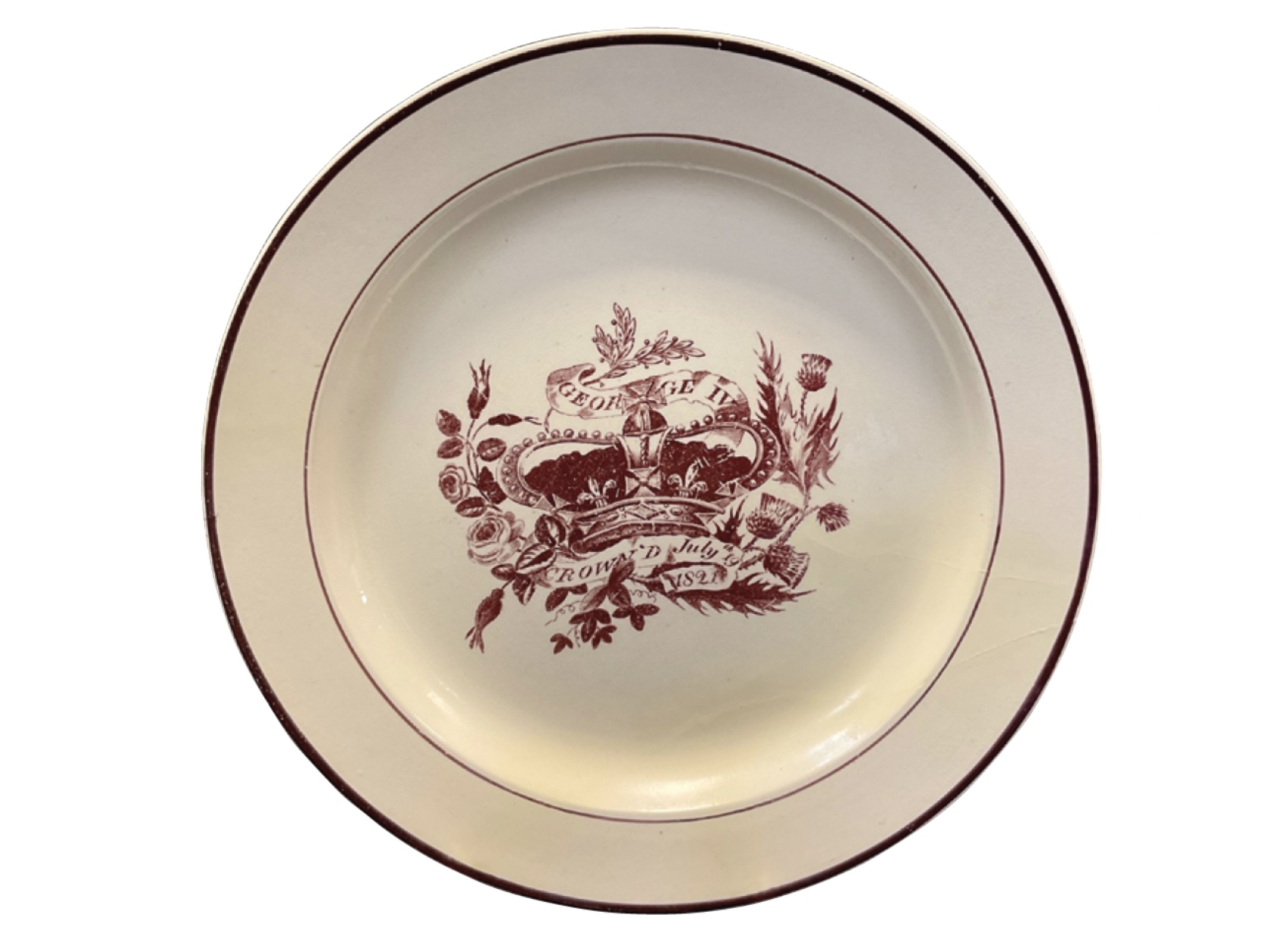
As well as plates, a range of jugs, bowls, cups and other types of creamware and pearlware from George IV’s reign appear at auction. Glassware is rarer. A pair of double-walled crown scent bottles (below) marking the same coronation of George IV are priced £650 (left) and £550 (right) from the Wiltshire glass specialist Delomosne.
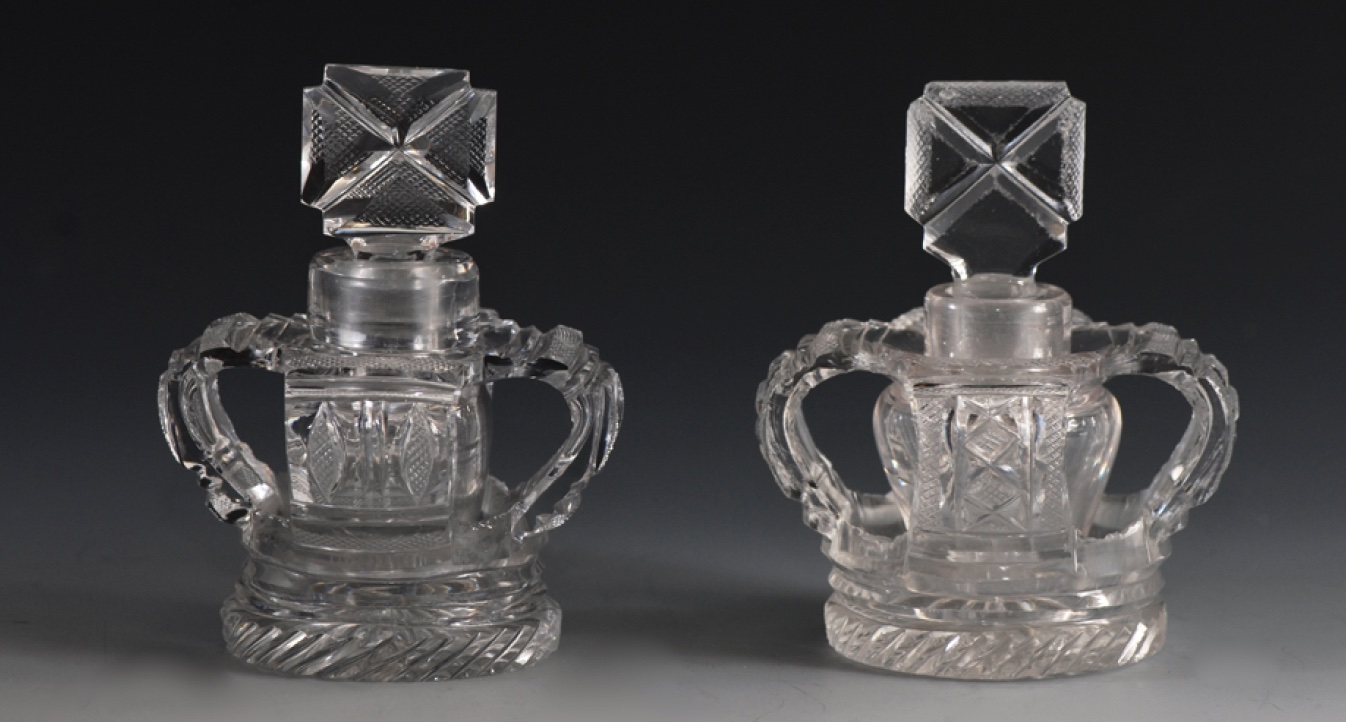
William IV
William IV had one of the shortest reigns ever when he ascended the throne at the age of 64 reigning for just seven years from 1830 till 1837 and, just like George IV, he was crowned a year later in 1831.
While some royal commemorative ware dates to his coronation, it is much rarer than later monarchs.
Below is a good example of a pearlware transferprinted jug depicting the coronation of William IV and his wife Queen Adelaide whose widespread popularity was down to her charity work, church-building, and accessible middle-class values. The jug sold for a creditable £200 at the Wiltshire auction house Woolley and Wallis in September 2021.
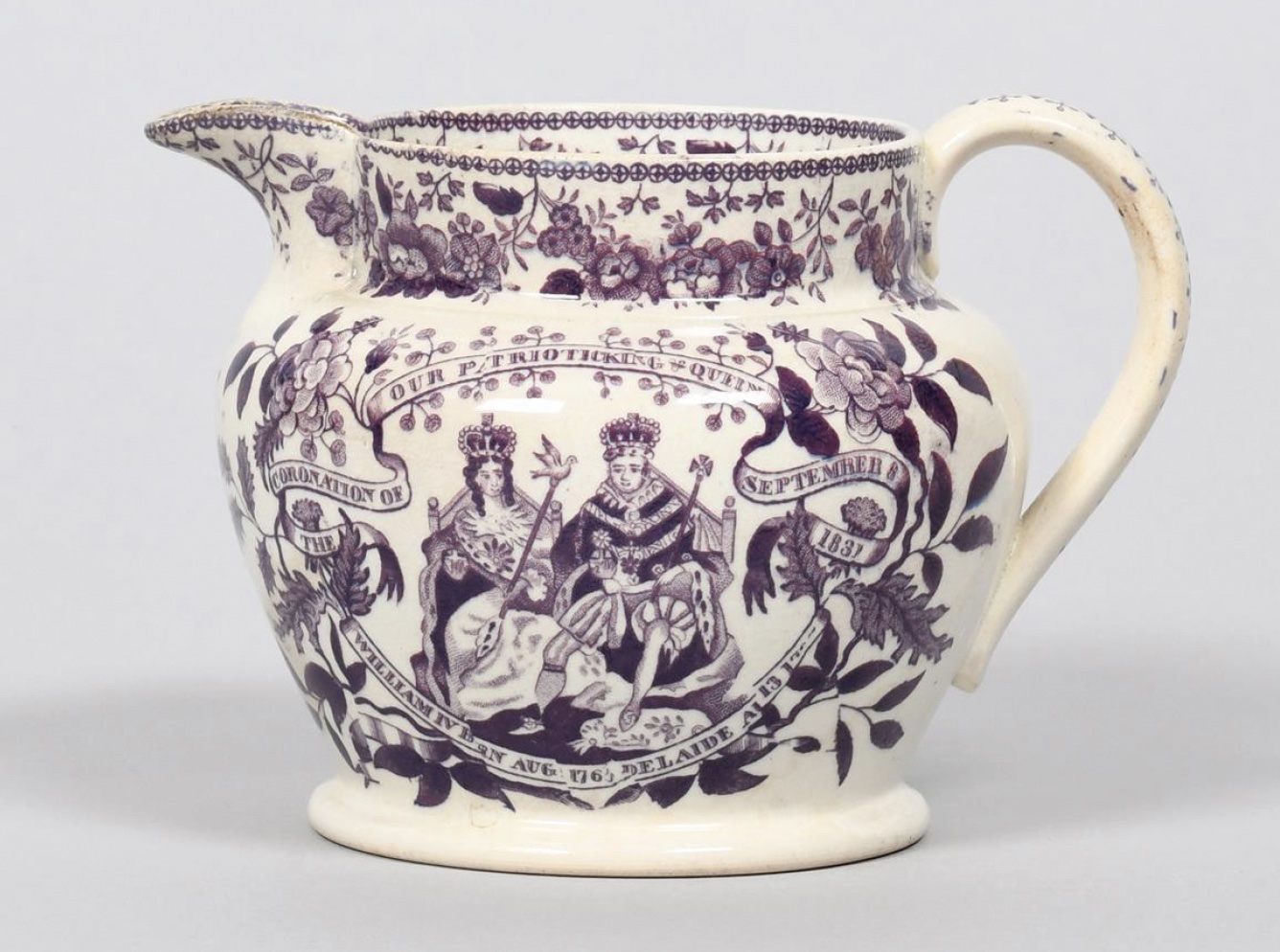
Queen Victoria royal commemorative ware
After the end of one of the shortest reigns for centuries, came the second longest serving monarch. Queen Victoria reigned for 64 years and, in that time, oversaw the dramatic changes brought by the Industrial Revolution when ceramic and glass production was booming.
Early Victorian royal commemorative ware is rarer than that made towards the end of her reign. One of the most sought-after Victorian pieces is a Swansea purple transfer mug marking her coronation in 1838. With an off the shoulder dress and her hair in ringlets it portrays an image of the monarch rarely seen. It is one of the most expensive multi-circulation items of royal commemorative china.
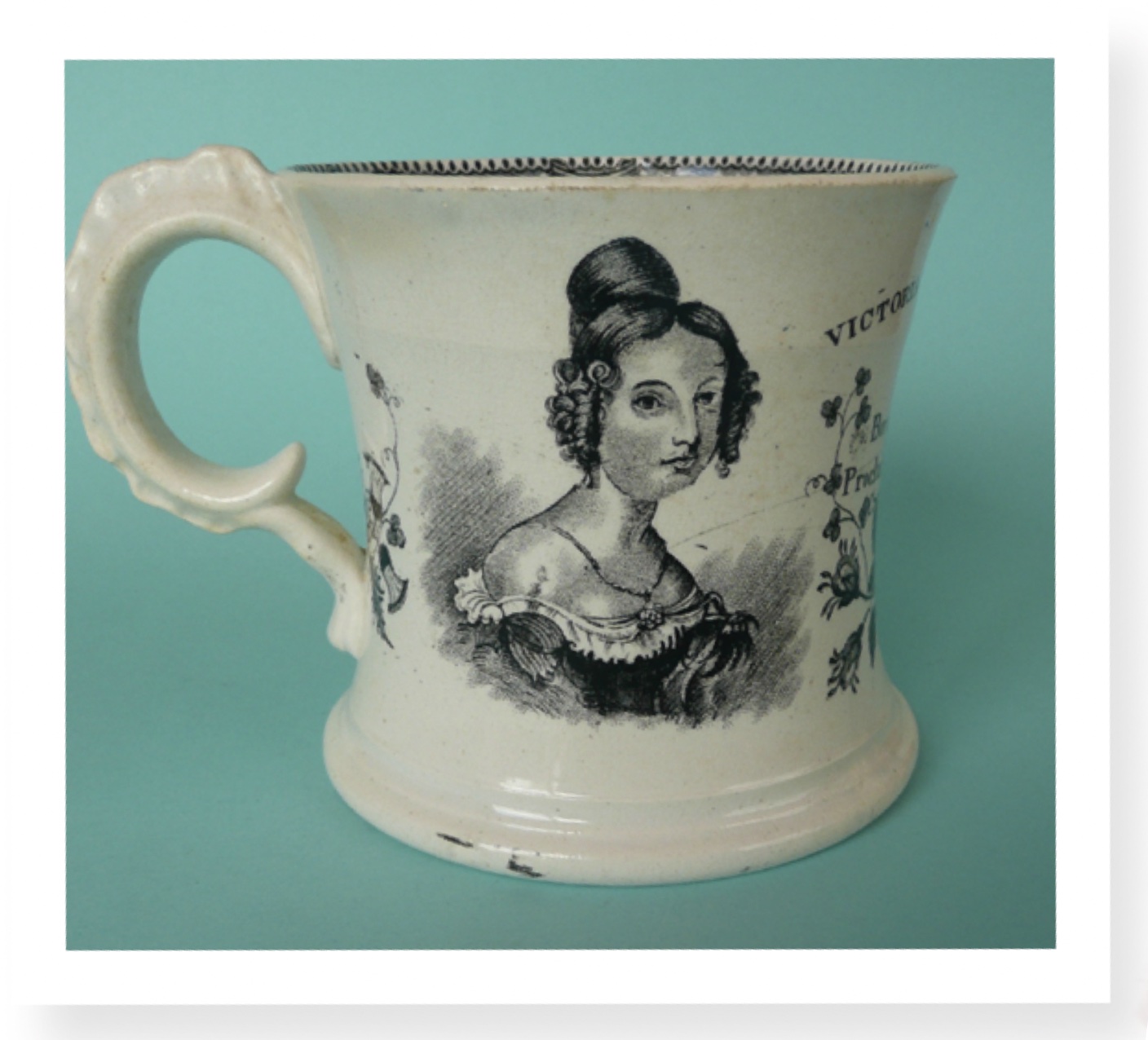
At the other end of Victoria’s reign, her diamond jubilee in 1897 produced a massive haul of commemorative ware. But it wasn’t limited to ceramics. Birmingham brassfounders James Clews and Sons designed a series of candlesticks to mark the occasion. The smallest in the range is the ‘Diamond Princess’ at 27cm high, the ‘Queen of Diamonds’ at 29cm high, followed by ‘Diamond Prince’ at 30cm high, then the ‘King of Diamonds’ at 31.5cm. The ‘Ace of Diamonds’ towers over them all at a whooping 35.5cm high. A pair of ‘Ace of Diamonds’ sold for £280 in 2019. All the designs have similar square bases with clipped edges and a large centre knop with the namesake diamond.
Edward VII
At the end of Victoria’s long reign, Edward VII ascended to the throne in 1901 and was crowned the following year.
Commemorative ware was all the rage and, after his mother, Edward takes the gong for the most designs in his name.
On his accession Edward commissioned half a million beakers from Royal Doulton to be presented to children and the needy. They are since known to collectors as “The King’s Dinner Beaker” and, made in blue, brown, green and purple, collecting all four is one collecting idea.
Also by Royal Doulton are some rarer pieces, such as this attractive pair of stoneware vases. They are each applied with portraits, with one depicting Edward and the other his wife, Alexandra. They also bear inscriptions commemorating the occasion and are coloured in underglaze green with royal blue. Despite the quality they sold for a very affordable £80 in 2019.
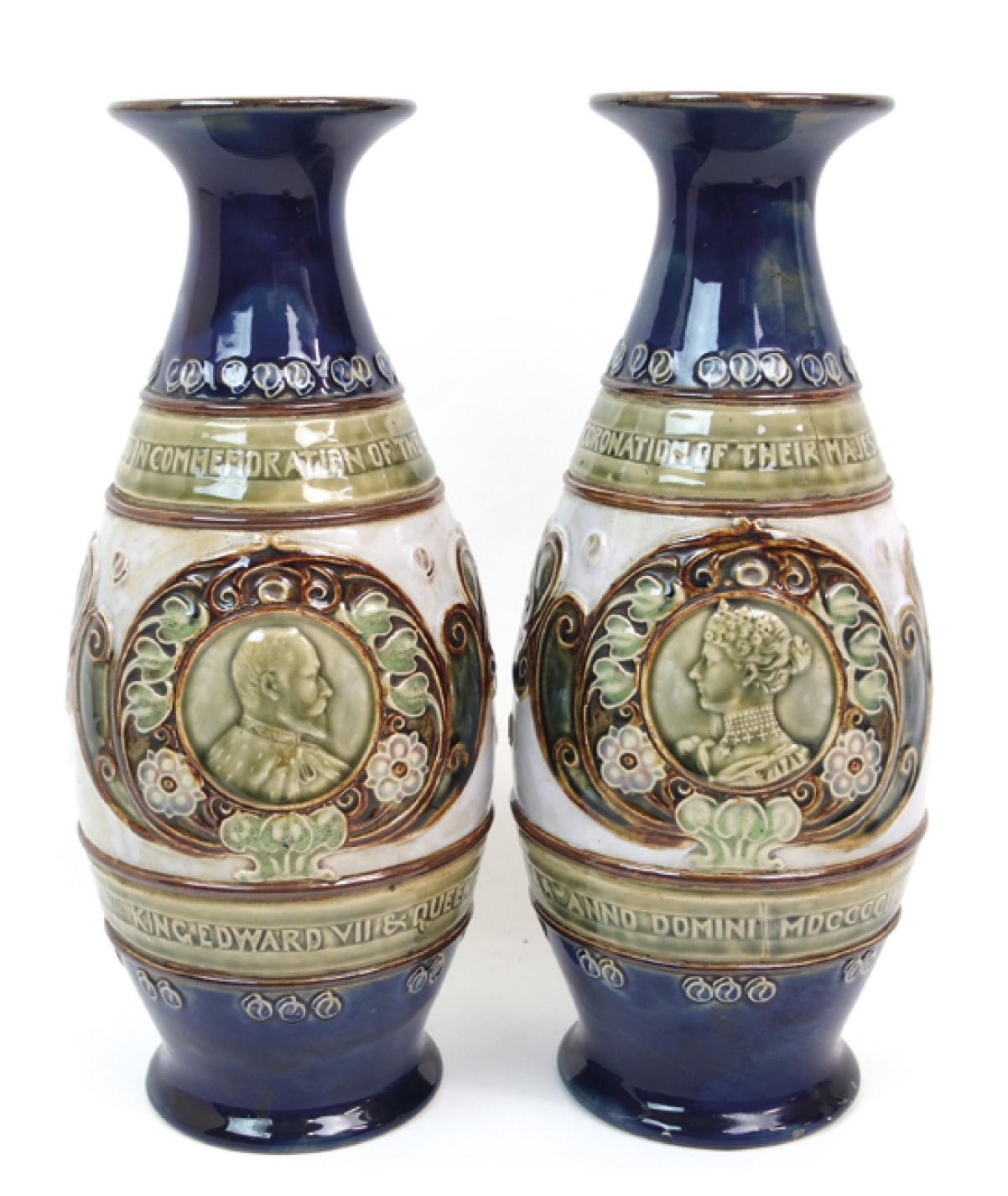
Royal commemorative ware for George V and VI
George V reigned for quarter of a century, from 1910 until his death in 1935. The Industrial Revolution had transformed Britain and ceramic and glass factories up and down the land were churning out an avalanche of items by the millions, which, of course, means it is eminently affordable. While some quality “cabinet” pieces are available, the lot below of 14 items sold for £10 at auction.
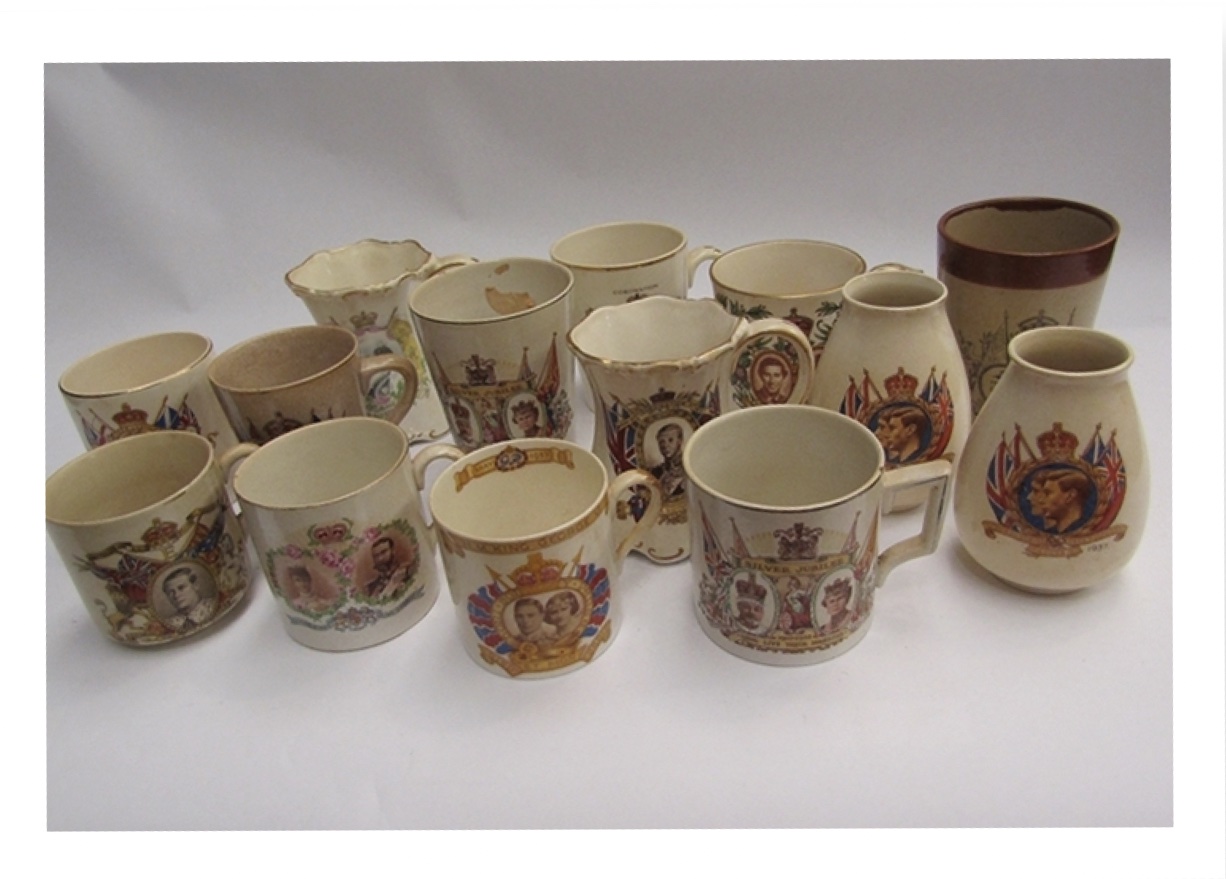
George VI came to the throne in 1937 after Edward’s abdication. While the outbreak of WWII was to later curtail the mass production of commemorative ware, there was a number of aff ordable and attractive items dating from the coronation of the father of Elizabeth II.
A selection of English commemorative press-moulded glass, c. 1937, including a set of six bon-bon dishes has an estimate of £150-£250 at Dreweatts’ sale on May 16.
Edward VIII
The coronation that didn’t happen still sparked a lot of commemorative ware with one of the most notable pieces being a mug designed by the in-vogue British painter and illustrator Eric Ravilious (1903-1940) who started a working relationship with Josiah Wedgwood & Sons in 1936. Following Edward’s abdication in December 1936, the design was recycled, revised and reformulated to celebrate both the coronation of George VI in 1937 and Elizabeth II in 1952.
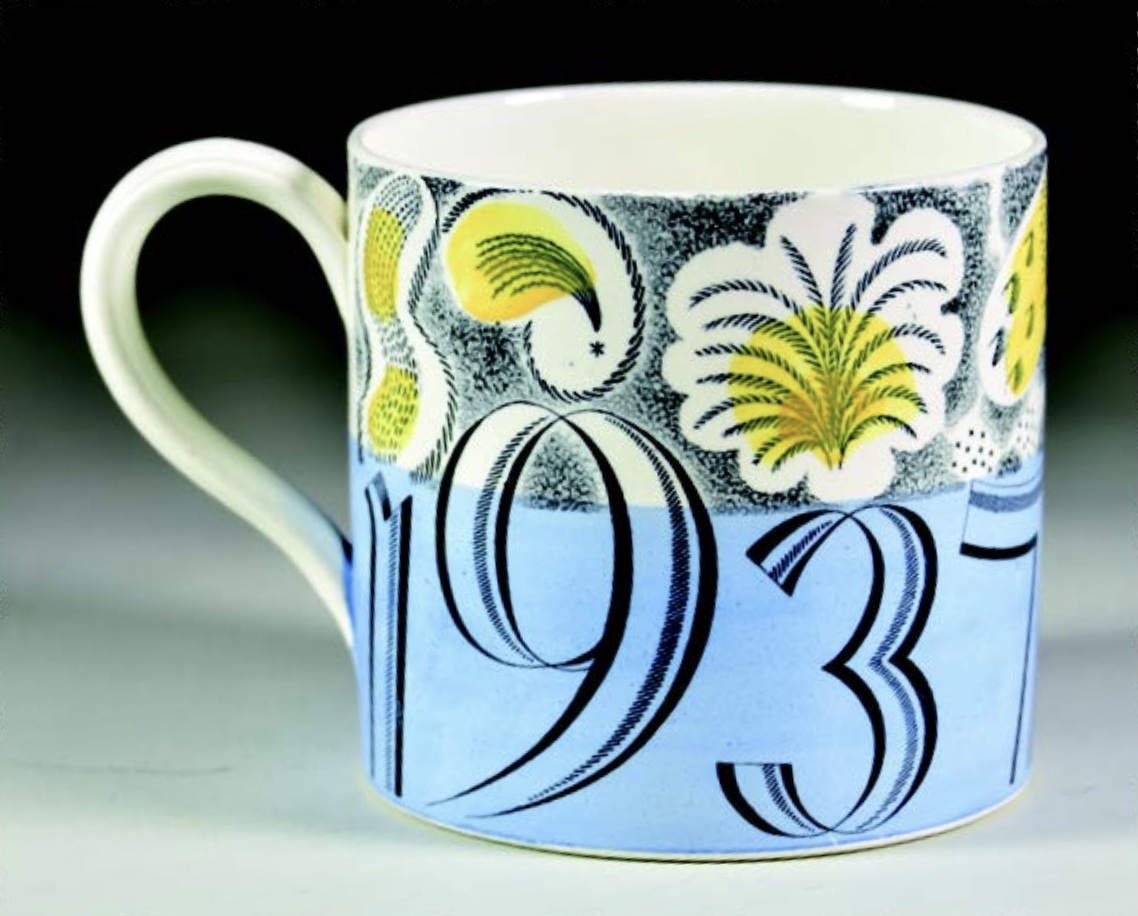
More overlooked than those by Ravilious are mugs designed by Dame Laura Knight (1877-1970). They are often referred to as the “circus design” because, along with St George and the dragon, there is an elephant incorporated within the decoration. The mugs were similarly adapted for the coronation of George VI. The pair below sold a few years ago for £42, representing extremely good value for money.
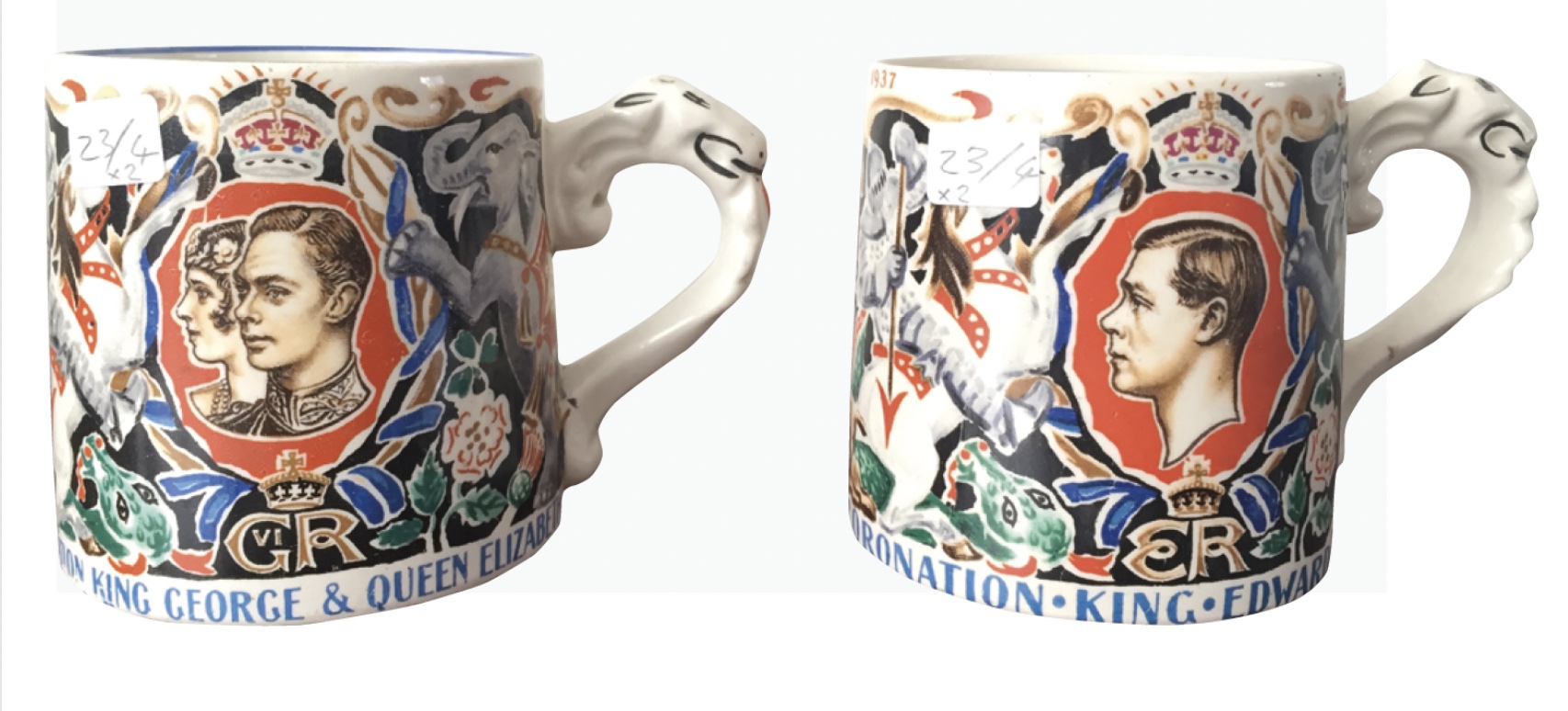
Coronation of Charles III
Ranging from pill boxes to a leather bookmark with a pair of coronation socks thrown in, the Royal Collection Trust recently released details of the official coronation range.
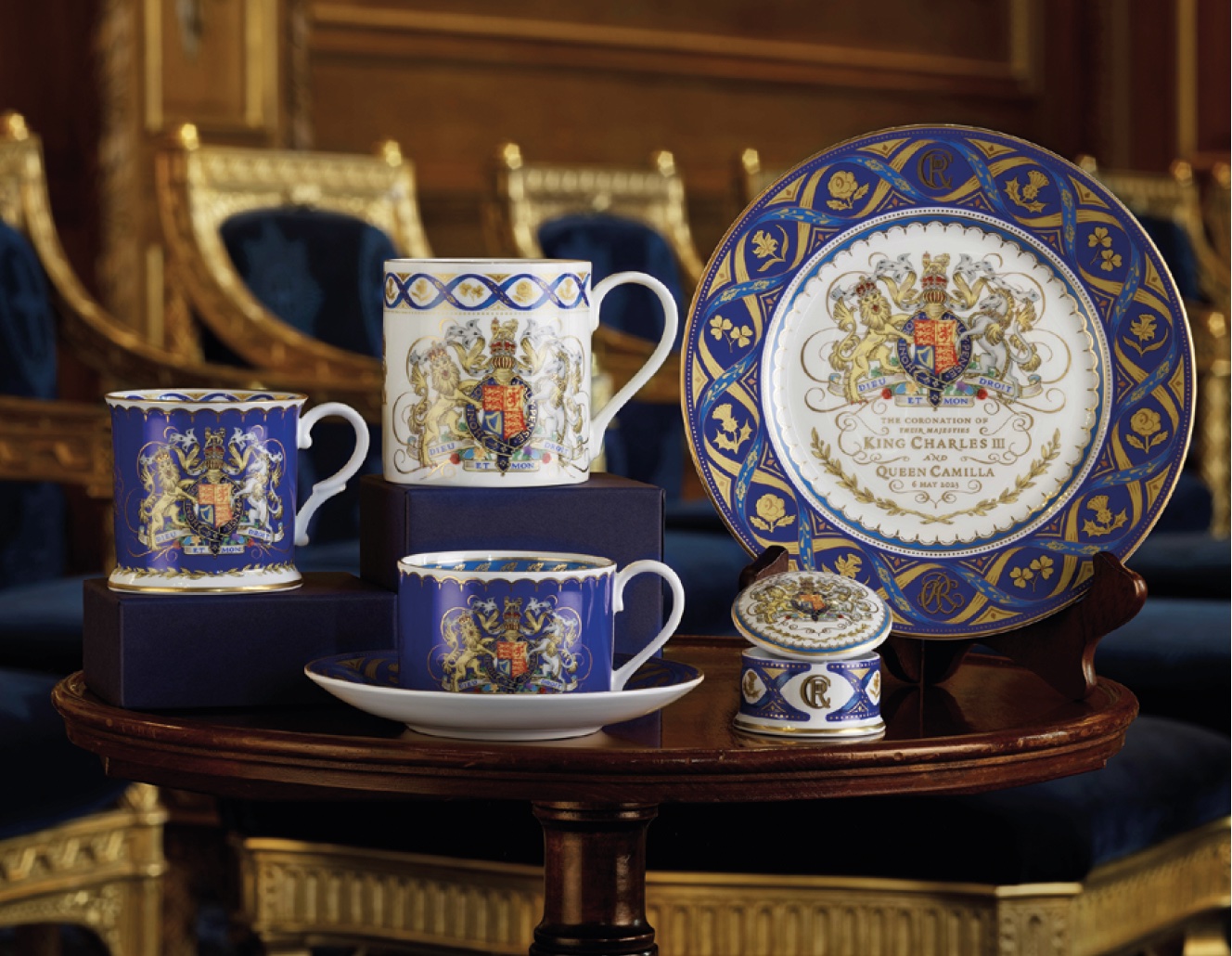
The central feature of the design is a royal coat of arms supported by a garland of laurel leaves symbolising peace. In the decorative border, oak leaves signifying strength and longevity appear alongside emblems of the UK’s four nations – thistle, rose, shamrock and daffodil.
The commemorative china is made from clay sourced in Devon and Cornwall which was cast, fired and decorated by hand at the potteries in Stoke-on-Trent, where china has been produced to commemorate royal occasions for generations. From the development of initial designs to the hand-finishing in 22-carat gold, the production process has involved more than 50 skilled artisans working in 12 factories.
Sustainable methods
Though rooted in traditional methods, the design and production methods of the range has evolved to incorporate effi ciency and sustainability.
Adaptations have been made to the design of cup handles to require fewer kiln firings, thereby reducing the amount of energy consumed.
The official chinaware range comprises a coffee mug priced £30, pillbox costing £40, a tankard priced at £50 and cup and saucer costing £75.
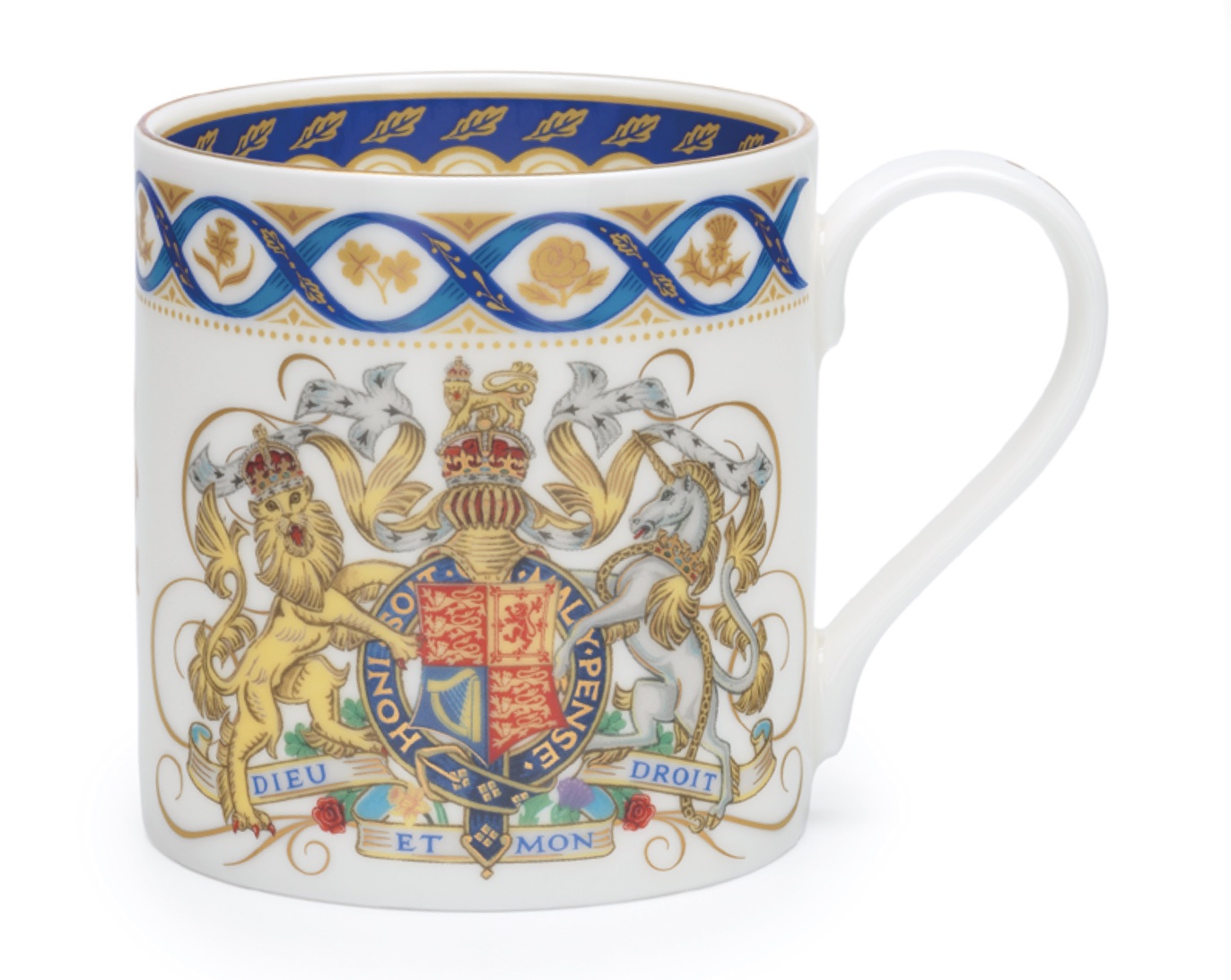
Other pieces in the range include a set of four souvenir spoons topped with a hand-painted coronation motif, orb, sceptre and crown, as well as the King’s cypher which is priced at £40. A pair of cotton coronation socks is priced £16.
There is also a coronation tea blend, with a £9.95 price tag, presented in a keepsake tea caddy made in London using solar power.

